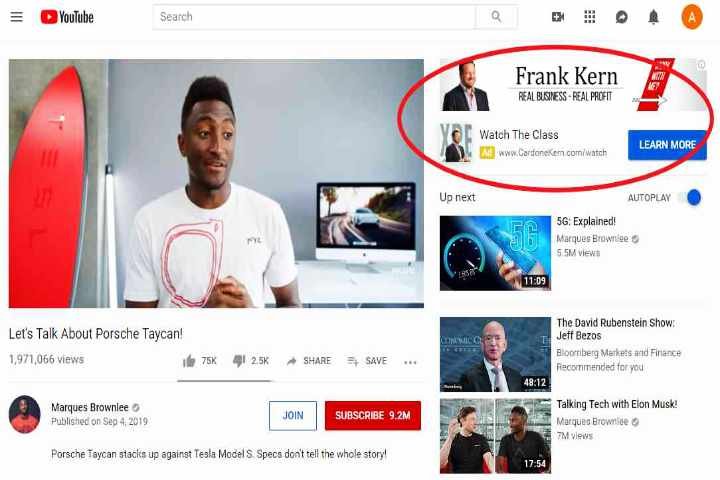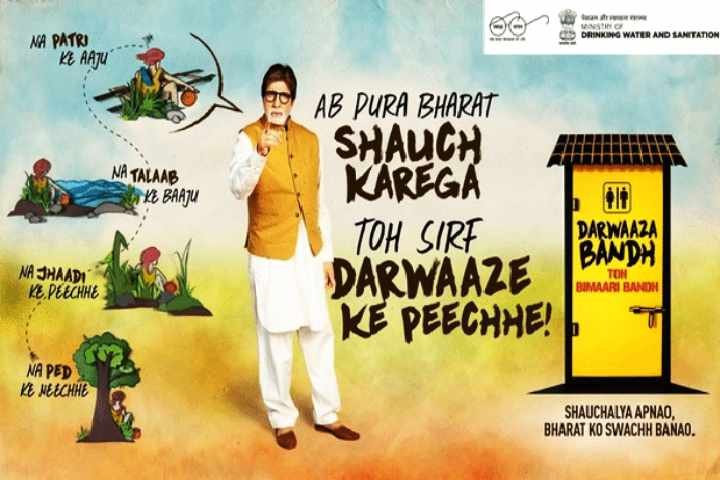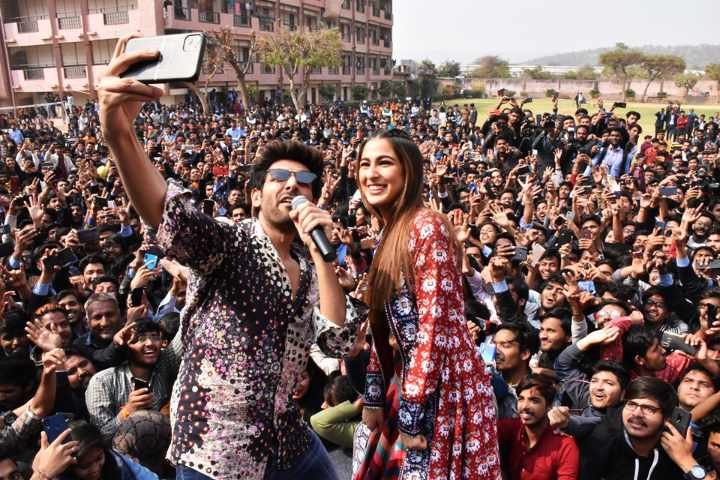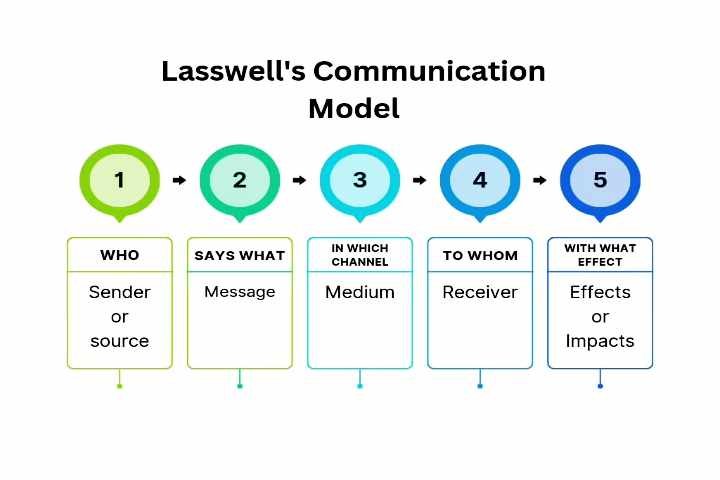Lasswell’s Model of Communication
Harold Lasswell’s Model of Communication significantly contributes to the field of communication theories. It provides a clear and insightful framework for comprehending the process of mass communication. Understanding this model is essential for media scholars to achieve academic success and gain a nuanced understanding of how information circulates in our media-saturated world.
In This Article
Harold Dwight Lasswell, an American political scientist and communication theorist, developed this model in 1948, which has stood the test of time and remains relevant today. This extensive analysis will thoroughly examine Lasswell’s model, including its components, applications, strengths, limitations, and relevance in the contemporary media.
The Five Ws of Lasswell’s Model
The essence of Lasswell’s Model is beautifully straightforward, captured in a single question:
“Who says What in Which channel to Whom with What effect?”
This question breaks down the communication process into five fundamental elements:
1. Who (Communicator)
2. Says What (Message)
3. In Which Channel (Medium)
4. To Whom (Receiver)
5. With What Effect (Effect)
Let’s examine each of these elements in detail:
Who (Communicator)

The ‘Who’ refers to the source or sender of the message. In mass communication, this could be an individual (like a news anchor), an organization (such as a newspaper company), or even a government body. The communicator plays a crucial role in shaping the message and choosing the channel through which it’s delivered.
In the contemporary media context, consider examples like:
- Arnab Goswami, a prominent news anchor and editor
- The Times of India, a leading newspaper
- Doordarshan, the public service broadcaster
The credibility, authority, and intentions of the communicator significantly influence how the audience perceives the message.
Says What (Message)
The ‘What’ is the content of the communication—the information, ideas, or emotions being conveyed. This could be news, entertainment, educational content, or persuasive messages like advertisements.
Examples include:
- A news report on the COVID-19 vaccination drive
- A Bollywood movie conveying social messages
- An advertisement for a popular consumer product like Tata Tea’s Jaago Re campaign
The message’s content, structure, and style are all essential factors to its effectiveness.
In Which Channel (Medium)

The ‘Channel’ is the medium through which the message is transmitted. This could be traditional media like newspapers, radio, television, or newer digital platforms like social media and websites.
Examples:
- Print media: The Hindu, Dainik Jagran
- Television: Zee News, NDTV
- Radio: All India Radio
- Digital platforms: YouTube, The Wire, Scroll.in
The choice of channel can significantly impact the reach and effectiveness of the message.
To Whom (Receiver)
The ‘Whom’ represents the audience or recipients of the message. This could be a broad, general audience or a specific target group defined by demographics, interests, or other factors.
For instance, we might consider:
- Urban youth watching YouTube
- Rural farmers listening to agricultural programs on All India Radio
- Middle-class families reading regional language newspapers
Understanding the audience is crucial for tailoring the message and choosing the appropriate channel.
With What Effect (Effect)

The ‘Effect’ refers to the impact of the communication on the audience. This could include changes in knowledge, attitudes, or behaviors.
Examples of effects:
- Increased awareness about social issues after watching a documentary on PSBT (Public Service Broadcasting Trust)
- Political coverage on news channels influences changes in voting behavior.
- Consumer purchasing decisions affected by advertisements in magazines or on e-commerce platforms
Measuring and understanding these effects is a crucial aspect of communication research and media planning.
Applications of Lasswell’s Model
Lasswell’s model provides a valuable framework for analyzing various forms of mass communication. Let’s explore some applications:
News Broadcasting
Consider the coverage of a significant event like the Indian General Elections:
- Who: News channels like NDTV, Republic TV, or Aaj Tak
- Says What: Election results, analysis, and commentary
- In Which Channel: Television broadcasts, live streaming on apps
- To Whom: Indian voters, political analysts, international observers
- With What Effect: Influencing public opinion, shaping political discourse
Public Health Campaigns
The government’s COVID-19 awareness campaign is another excellent example.
- Who: Ministry of Health and Family Welfare
- Says What: Information about COVID-19 prevention and vaccination
- In Which Channel: Multiple channels, including TV, radio, newspapers, and social media
- To Whom: General public across diverse demographics
- With What Effect: Increased awareness, adoption of preventive measures, vaccine uptake
Bollywood Film Promotion

The marketing of a big-budget Bollywood film illustrates the model in entertainment:
- Who: Film production house and marketing team
- Says What: Teasers, trailers, interviews with stars
- In Which Channel: Social media, television, print media, billboards
- To Whom: Movie-going audience, particularly young urban viewers
- With What Effect: Generate buzz, increase ticket sales, influence pop culture
Strengths of Lasswell’s Model
1. Simplicity and Clarity: The model’s straightforward structure makes it easy to understand and apply, even for complex communication scenarios.
2. Versatility: It can be used to analyze various forms of communication, from interpersonal to mass media.
3. Focus on Effects: Explicitly including the ‘effect’ component encourages consideration of communication outcomes.
4. Useful for Media Planning: The model provides a checklist for media professionals to ensure all aspects of communication are considered.
Limitations of Lasswell’s Model
1. Linear Nature: The model suggests a one-way flow of communication, which doesn’t account for the interactive nature of modern media.
2. Lack of Feedback: It doesn’t explicitly include audience feedback or two-way communication.
3. Oversimplification: This model may oversimplify complex communication processes.
4. Assumption of Effect: The model assumes that all communication has an effect, which may not always be true.
Lasswell’s Model in the Digital Age
Despite being developed in the era of traditional mass media, Lasswell’s Model remains relevant in the digital age. However, its application requires some adaptation:
1. Multiple Communicators: Social media allows everyone to be a ‘Who,’ blurring the lines between sender and receiver.
2. Dynamic Messages: The ‘What’ can change rapidly with real-time updates and user-generated content.
3. Diverse Channels: The ‘Which Channel’ now includes a multitude of digital platforms and apps.
4. Fragmented Audience: The ‘Whom’ is increasingly segmented and personalized.
5. Complex Effects: The ‘What Effect’ becomes more challenging to measure with the interactivity of digital media.
Case Study: #MeToo Movement in India
The #MeToo movement in India provides an interesting case study for applying Lasswell’s Model in the context of social media activism:
Who: Multiple voices, including celebrities, journalists, and ordinary citizens
Says What: Personal stories of sexual harassment and assault
In Which Channel: Primarily Twitter, but also other social media platforms and traditional media
To Whom: General public, policymakers, legal authorities
With What Effect: Raised awareness, sparked public debates, and led to resignations and legal actions
This case demonstrates how Lasswell’s Model can be applied to analyze complex, multi-faceted communication phenomena in the digital age.
Criticism and Evolution
While Lasswell’s Model has been widely influential, it has also faced criticism. Scholars argue that it oversimplifies the communication process and doesn’t account for the noise or interference that can affect message transmission. Moreover, it doesn’t consider the social and cultural contexts in which communication occurs.
In response to these criticisms, more complex models have been developed, such as the Shannon-Weaver Model, which introduces the concept of noise, and the Osgood-Schramm Model, which emphasizes the circular nature of communication.
However, the enduring value of Lasswell’s Model lies in its simplicity and adaptability. It continues to provide a useful starting point for analyzing communication processes and serves as a foundation for understanding more complex models.
Lasswell’s Model and Media Literacy
Lasswell’s model can be a valuable tool for promoting media literacy in an era of information overload and fake news. By encouraging audiences to consider who is communicating, what they’re saying, through which channels, to whom, and with what effects, the model provides a framework for critical media consumption.
In India, where media literacy initiatives are gaining importance, Lasswell’s Model could be incorporated into educational programs to help students and citizens become more discerning media consumers.
Conclusion
Despite its age and simplicity, Harold Lasswell’s Model of Communication remains a cornerstone in the study of mass communication. For UGC-NET aspirants, understanding this model is crucial for exam success and developing a critical perspective on the media landscape.
As we’ve seen, the model can be applied to various forms of communication in the contemporary media context, from news broadcasting to public health campaigns to social media activism. While it has limitations, particularly in fully capturing the complexities of digital-age communication, it continues to provide a valuable framework for analysis.
Lasswell’s model of communication’s simple yet profound question, “Who says What in Which Channel to Whom with What Effect?” remains as relevant as ever in a world where communication is increasingly complex and multi-faceted. It serves as a reminder to consider all aspects of the communication process, from the source to the ultimate impact on the audience.
Lasswell’s model of communication can be used as a foundation for understanding more complex theories and as a tool for analyzing the ever-evolving media landscape in India and beyond.
UGC NET Exam Tips
1. Memorize the five components of Lasswell’s Model in order.
2. Practice applying the model to various communication scenarios.
3. Be prepared to discuss the model’s strengths and limitations.
4. Understand how the model can be adapted to digital communication.
5. Compare Lasswell’s Model with other communication models you’ve studied.





